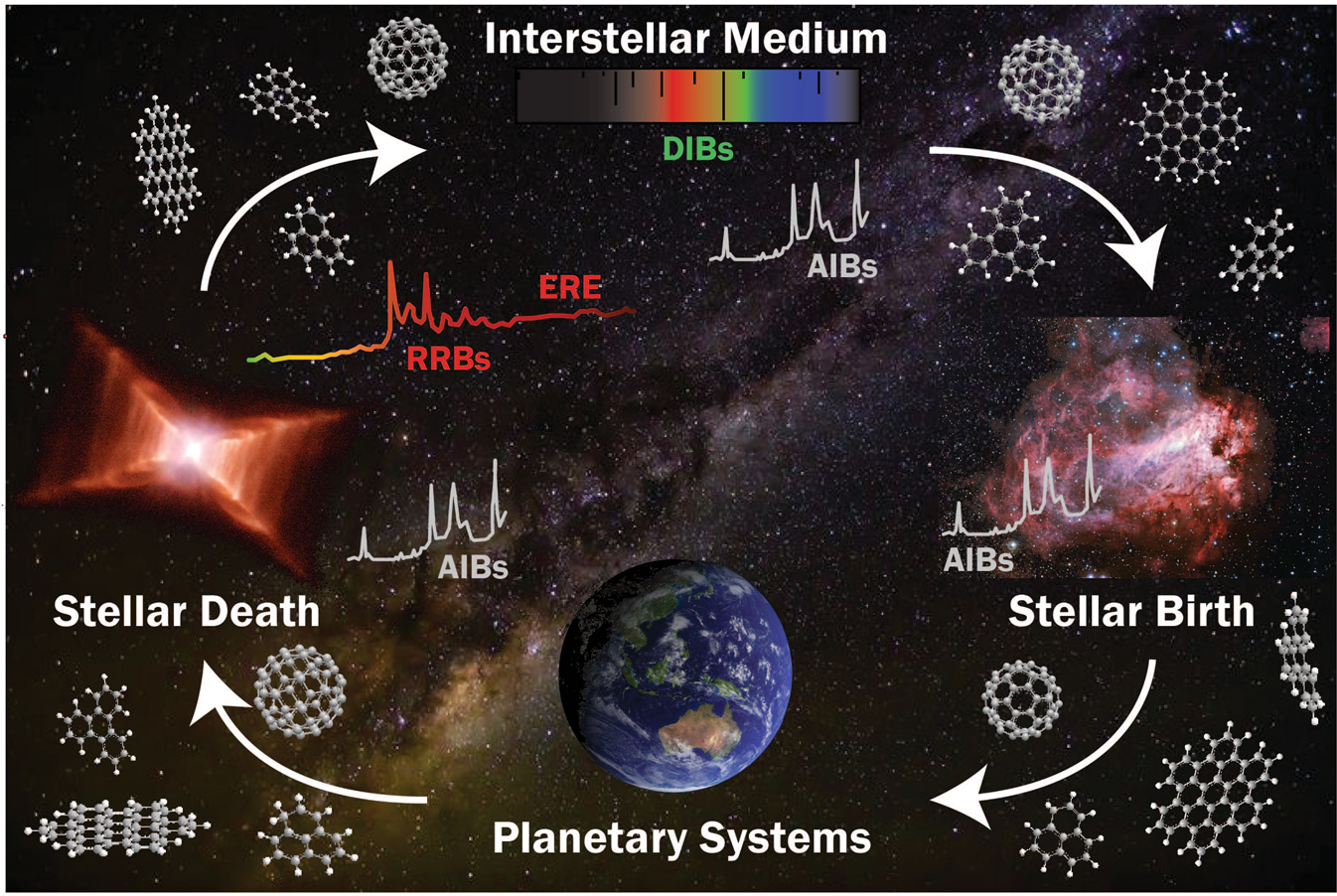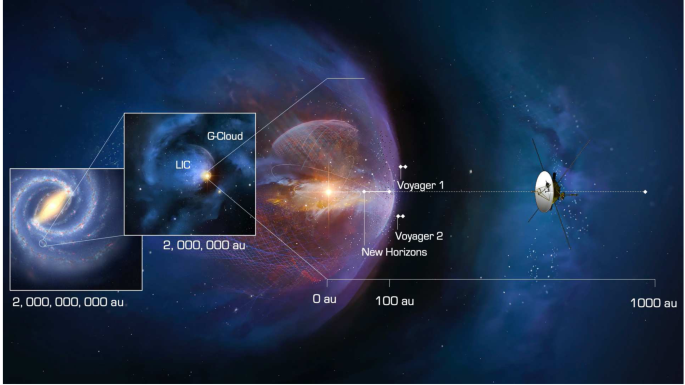The interstellar medium (ISM) plays a crucial role in the cosmic tapestry, serving as the bridge between stars and galaxies. This article delves into the multifaceted nature of the ISM, exploring its definition, composition, and significance. We’ll trace the historical milestones that have shaped our understanding, from early observations to cutting-edge research. Discover the advanced techniques and instruments driving recent discoveries and how space missions and ground-based observatories contribute to this dynamic field. We’ll also examine the ISM’s influence on star formation and evolution, address current challenges, and highlight future directions in exploration. Finally, we’ll discuss how these insights enhance our broader understanding of the universe.
Come explore this topic with uzocn.com for a deeper understanding.
1. Definition and Importance of the Interstellar Medium (ISM)
The interstellar medium (ISM) is the vast, diffuse matter that exists between stars within a galaxy. Comprising gas, dust, and cosmic rays, the ISM plays a pivotal role in the lifecycle of galaxies. It acts as the raw material for star formation, fueling the birth of new stars and planetary systems. The ISM’s composition varies, with regions of dense molecular clouds serving as stellar nurseries, while more diffuse areas contain ionized gases and interstellar dust. Understanding the ISM is crucial for grasping the broader dynamics of galactic evolution and star lifecycle processes. By studying the ISM, scientists gain insights into the mechanisms driving star formation, the distribution of elements across the galaxy, and the overall energy balance of the interstellar medium, making it a fundamental component in the quest to comprehend the universe’s structure and history.
2. Composition and Types of Interstellar Medium

The interstellar medium (ISM) is composed of various components, each contributing uniquely to its structure and function. The primary constituents are gas, dust, and cosmic rays.
Gas is the most abundant element in the ISM, existing mainly as hydrogen, which can be found in different forms: neutral hydrogen (H I), ionized hydrogen (H II), and molecular hydrogen (H₂). Neutral hydrogen is spread across the ISM in large, diffuse clouds, while ionized hydrogen is often found in regions of active star formation and supernova remnants. Molecular hydrogen, the densest form, forms complex structures known as molecular clouds, where new stars are born.
Dust consists of tiny solid particles that play a crucial role in the cooling and chemistry of the ISM. These particles are essential in the formation of molecules and the attenuation of starlight.
Cosmic rays are high-energy particles originating from various cosmic processes, influencing the ISM’s physical conditions and chemical processes. Together, these elements shape the ISM’s dynamics, impacting star formation and galactic evolution.
3. Historical Milestones in ISM Exploration

The exploration of the interstellar medium (ISM) has evolved significantly over the past century, marked by key milestones that have shaped our understanding. In the early 20th century, astronomers like Jan Oort and Edwin Hubble laid the groundwork by observing the distribution of stars and the presence of interstellar matter. The development of radio astronomy in the 1930s provided new tools to study the ISM, revealing the existence of neutral hydrogen and leading to the discovery of large-scale galactic structures.
The 1960s and 1970s brought advancements with space missions and ground-based observations that allowed for more detailed mapping of the ISM. The launch of the Hubble Space Telescope in 1990 provided unprecedented views of the ISM, enabling the study of molecular clouds and stellar nurseries in high resolution. The early 2000s saw the advent of high-energy astrophysics, with missions like the Chandra X-ray Observatory offering insights into the interaction between cosmic rays and the ISM.
Recent developments in observational technology, including advanced telescopes and spectrographs, continue to refine our understanding, revealing intricate details about the composition, dynamics, and influence of the ISM on galactic processes.
4. Techniques and Instruments Used in ISM Research
Researching the interstellar medium (ISM) relies on a range of sophisticated techniques and instruments designed to probe its complex nature. Radio telescopes are crucial for detecting neutral hydrogen, utilizing the 21-cm emission line to map large-scale structures within the ISM. Instruments such as the Very Large Array (VLA) and the Arecibo Observatory have been instrumental in providing detailed observations of these emissions.
Infrared telescopes, like the Spitzer Space Telescope and the James Webb Space Telescope (JWST), are essential for studying dust and molecular clouds. Infrared observations allow scientists to peer through the dense clouds of gas and dust to analyze star-forming regions and the thermal properties of the ISM.
X-ray observatories, including the Chandra X-ray Observatory and the X-ray Multi-Mirror Mission (XMM-Newton), provide insights into high-energy processes and interactions between cosmic rays and the ISM. These instruments help reveal the dynamics of supernova remnants and the impact of high-energy phenomena on the interstellar environment.
Together, these techniques and instruments offer a comprehensive view of the ISM, enhancing our understanding of its composition and behavior.
5. Key Findings from Recent ISM Studies
Recent studies of the interstellar medium (ISM) have yielded several significant findings that enhance our understanding of its complexity and role in the galaxy. One key discovery is the detailed mapping of molecular clouds, which has revealed the intricate structure and distribution of these stellar nurseries. Observations from the James Webb Space Telescope have provided unprecedented insights into the composition of these clouds, including the detection of complex organic molecules essential for star and planet formation.
Research using radio telescopes has identified previously unknown large-scale structures within the ISM, such as vast filamentary networks connecting different regions of the galaxy. These findings suggest that the ISM is more interconnected than previously thought, influencing star formation across extensive areas.
Additionally, studies with X-ray observatories have illuminated the impact of supernovae on the ISM, showing how these explosive events contribute to the heating and ionization of interstellar gas. Recent data also indicate a more dynamic interaction between cosmic rays and the ISM than earlier models predicted, affecting the medium’s chemical and physical properties.
These advancements collectively deepen our understanding of the ISM’s role in galactic evolution and star formation.
6. Role of Space Missions in ISM Exploration
Space missions have revolutionized the exploration of the interstellar medium (ISM) by providing unparalleled observational capabilities. Instruments on board space telescopes, such as the Hubble Space Telescope and the James Webb Space Telescope (JWST), offer high-resolution imaging and spectroscopy that reveal the intricate details of molecular clouds, star-forming regions, and interstellar dust. These observations have allowed scientists to study the ISM’s composition, structure, and dynamics with greater accuracy.
Space missions also enable observations across different wavelengths that are difficult to access from Earth due to atmospheric interference. For instance, the Chandra X-ray Observatory and the X-ray Multi-Mirror Mission (XMM-Newton) have provided crucial data on high-energy phenomena within the ISM, such as supernova remnants and cosmic rays.
These space-based instruments help identify and analyze key processes within the ISM, significantly advancing our understanding of its role in galactic evolution and star formation.
7. Contributions of Ground-Based Observatories to ISM Knowledge
Ground-based observatories have made substantial contributions to our understanding of the interstellar medium (ISM) by providing detailed observations across various wavelengths. Radio telescopes, such as the Very Large Array (VLA) and the Arecibo Observatory, have been instrumental in mapping the distribution of neutral hydrogen through the 21-cm line emission. These observations reveal the large-scale structure of the ISM, including the extent of interstellar clouds and the dynamics of gas flow within galaxies.
Infrared observatories like the Mauna Kea Observatories have played a key role in studying the thermal properties of dust and molecular clouds. By detecting infrared radiation, these instruments have enabled scientists to peer through dense regions of the ISM and investigate star-forming regions with high precision. This has led to discoveries about the composition of interstellar dust and the processes involved in star formation.
Additionally, ground-based optical telescopes, such as the Keck Observatory and the Palomar Observatory, have provided valuable spectroscopic data on the ISM’s chemical composition and physical conditions. These observations help understand the effects of stellar winds and supernovae on the ISM and contribute to modeling its role in galactic evolution.
Overall, ground-based observatories complement space missions by offering continuous, detailed, and diverse insights into the ISM, enhancing our comprehensive understanding of this vital component of the galaxy.
8. The Impact of ISM on Star Formation and Evolution
The interstellar medium (ISM) plays a critical role in the formation and evolution of stars. Molecular clouds, the densest regions of the ISM, serve as the primary sites for star formation. Within these clouds, regions of higher density and temperature collapse under gravity to form protostars, which eventually evolve into full-fledged stars. The ISM’s composition, including dust and gas, influences the processes of accretion and angular momentum, impacting the rate and efficiency of star formation.
Moreover, the ISM affects the lifecycle of stars through feedback mechanisms. For example, massive stars and supernovae inject energy and material back into the ISM, enriching it with heavy elements and heating the surrounding gas. This feedback can trigger new cycles of star formation or halt it, depending on the intensity of the energy released.
The interaction between stars and the ISM also shapes the structure and distribution of the medium itself. Understanding these processes is essential for grasping the broader dynamics of galactic evolution and the continuous cycle of matter in the universe.
9. Challenges and Future Directions in ISM Exploration
Exploring the interstellar medium (ISM) presents several challenges that drive ongoing research and innovation. One major challenge is the vast scale and diversity of the ISM, which requires a range of observational techniques to capture its various components and dynamics. The complexity of molecular cloud structures and the intricate interactions between gas, dust, and cosmic rays add to the difficulty of creating comprehensive models.
Another challenge is the limited resolution and sensitivity of current instruments, which can hinder detailed observations of distant or faint ISM regions. Advancements in observational technology and data analysis methods are crucial for overcoming these limitations.
Future directions in ISM exploration include enhancing the capabilities of both space-based and ground-based observatories to achieve higher resolution and broader wavelength coverage. Integrating data from diverse sources and developing more sophisticated models will improve our understanding of the ISM’s role in galactic processes. Continued innovation in instrumentation and observational strategies will be key to addressing these challenges and expanding our knowledge of the ISM.
10. Implications of ISM Research for Understanding the Universe
Research on the interstellar medium (ISM) has profound implications for our understanding of the universe. By studying the ISM, scientists gain insights into the fundamental processes of star formation and galactic evolution. The ISM’s role in creating and dispersing elements through star formation and supernovae is crucial for understanding the chemical enrichment of galaxies and the lifecycle of matter in the cosmos.
Additionally, the ISM affects the dynamics of galaxies by influencing star formation rates and the distribution of energy and material. Understanding these processes helps in modeling galaxy formation and evolution more accurately.
The insights gained from ISM research also impact our knowledge of cosmic structures and the overall architecture of the universe. By mapping the ISM and understanding its interactions with stars and cosmic rays, researchers can better interpret observations of distant galaxies and cosmic phenomena. Overall, ISM research is integral to unraveling the complexities of the universe and enhancing our grasp of its fundamental workings.
The exploration of the interstellar medium (ISM) reveals its vital role in star formation, galactic evolution, and the cosmic cycle of matter. Through advanced techniques and collaborative efforts, both space missions and ground-based observatories continue to uncover the complexities of the ISM. These insights deepen our understanding of the universe, highlighting the ISM’s essential impact on cosmic processes.
uzocn.com
uzocn.com


